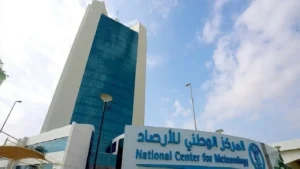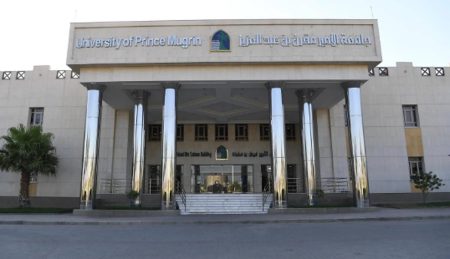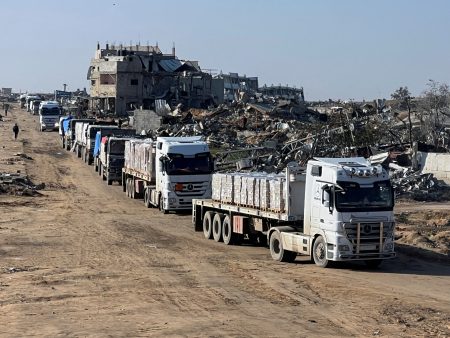The situation in the Gaza Strip continues to deteriorate rapidly, with a recent United Nations report revealing a catastrophic level of food insecurity affecting 96% of the population. This alarming statistic underscores the urgent need for increased humanitarian aid to prevent widespread famine and alleviate the suffering of Palestinian civilians. The already dire circumstances have been dramatically worsened by recent severe weather, including heavy rains, flooding, and freezing temperatures, leaving vulnerable communities even more exposed and desperate. This article will delve into the details of the crisis, the UN’s response, and the obstacles hindering effective aid delivery, focusing on the escalating humanitarian crisis in Gaza.
The Scale of the Humanitarian Crisis in Gaza
The UN’s warning paints a grim picture. Nearly the entire population of Gaza is facing crisis levels of hunger – a situation described as unprecedented in modern times. This isn’t simply a lack of food; it’s a systemic breakdown of essential services, including healthcare, sanitation, and shelter. The combination of ongoing conflict, restricted access, and now, harsh winter conditions, has created a perfect storm of despair.
The impact of the weather has been particularly devastating. Thousands of tents housing internally displaced persons (IDPs) have been flooded, destroying what little possessions these families had left after losing their homes. Reports indicate that many are now completely exposed to the elements, increasing the risk of hypothermia and the spread of waterborne diseases.
Rising Poverty and Unemployment Rates
Compounding the immediate crisis are long-term economic factors. Data from the World Bank reveals that poverty rates in Gaza are approaching 100%, with unemployment exceeding 80%. These figures predate the recent escalation of violence, but the current situation has undoubtedly pushed even more families into destitution. The destruction of infrastructure and the disruption of economic activity have crippled the local economy, leaving residents with no means of supporting themselves.
UN Response and Aid Efforts
Recognizing the severity of the situation, the United Nations and its partners are working to provide assistance to those in need. Tome Fletcher, the UN’s Under-Secretary-General for Humanitarian Affairs and Emergency Relief Coordinator, highlighted the desperation of Palestinians in Gaza, emphasizing the destruction of their limited belongings due to flooding.
The UN Special Coordinator for the Middle East Peace Process, Tor Wessells, has allocated $18 million to support vital operations throughout Gaza. Teams have been dispatched to assess the needs of IDPs in camps and to evaluate the conditions in overwhelmed hospitals. However, aid workers consistently report that the scale of the need far outweighs the available resources. The focus is on providing emergency food assistance, shelter materials, medical supplies, and clean water. Gaza aid delivery is proving to be a monumental challenge.
Obstacles to Reaching Those in Need
Despite the efforts of the UN and other humanitarian organizations, delivering aid to Gaza remains incredibly difficult. The primary obstacle is the continued imposition of restrictions on the movement of goods and personnel. Israel maintains tight control over the borders of Gaza, limiting the entry of essential supplies, including construction materials needed to repair damaged infrastructure and build more durable shelters.
Furthermore, the ongoing conflict creates a dangerous environment for aid workers. Access to affected areas is often denied or delayed due to security concerns. The destruction of roads and buildings also hinders the transportation of aid. The refusal to allow alternative shelter solutions, despite the widespread destruction of tents, is a particularly concerning development. This situation is exacerbating the displacement in Gaza and leaving vulnerable populations with nowhere to turn.
The Long-Term Impact and Calls for Action
The current crisis is not merely a short-term emergency; it has the potential to create long-lasting consequences for the people of Gaza. The psychological trauma of displacement, loss, and constant insecurity will take years to heal. The destruction of infrastructure will require massive investment to rebuild. The collapse of the economy will leave a generation struggling to find employment and opportunities.
The recent cessation of large-scale hostilities, while welcome, has not translated into a significant improvement in the humanitarian situation. The agreement, which came into effect on October 10th, halted a period of intense fighting that resulted in over 69,000 Palestinian fatalities and more than 170,000 injuries, predominantly among women and children. However, sporadic violence continues, and the underlying issues that contribute to the crisis remain unresolved.
The international community must step up its efforts to address the humanitarian crisis in Gaza. This includes:
- Urging Israel to lift all remaining restrictions on aid delivery.
- Providing substantial financial assistance to support humanitarian operations and reconstruction efforts.
- Advocating for a lasting political solution that addresses the root causes of the conflict and ensures the safety and dignity of all Palestinians.
- Ensuring accountability for violations of international humanitarian law.
The situation in Gaza demands immediate and sustained attention. Failure to act decisively will have devastating consequences for the people of Gaza and could further destabilize the region. The world cannot afford to stand by while an entire population faces starvation and despair.

















